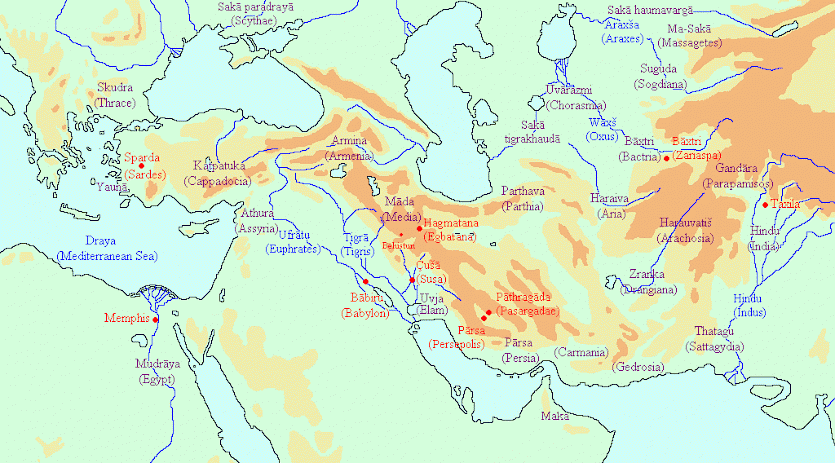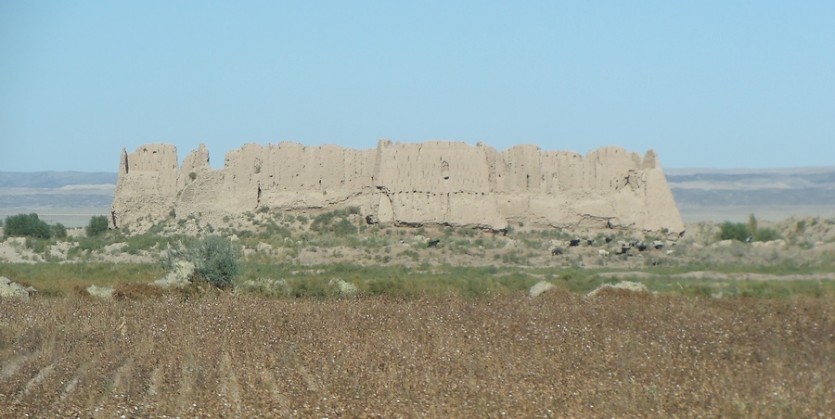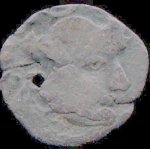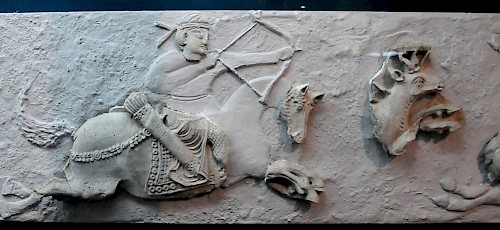Chorasmia
Q182647Chorasmia (Old Persian Uvârazmiya): satrapy of the ancient Achaemenid Empire, in modern Uzbekistan. Later, it was an independent kingdom.

Chorasmia is dominated by the river Amudar'ya, the ancient Oxus, which empties in what is left of Lake Aral. Today, this is a fertile area between teh Kara Kum and Kizil Kum deserts, and the country may have been even more fertile in Antiquity, because the Amudar'ya seems to have carried more water. There are indications that the river once had an extra branch that emptied itself into the Caspian Sea.note Archaeologists have found indications for irrigation and agriculture dating back to the fifth millennium BCE, which is relatively old.
Early State

There are also indications that some kind of kingdom had come into being as early as the thirteenth century BCE. The first of these indications is the fact that ancient chronographers knew of a Chorasmian era, which dated back to 1292 BCE. The second indication is that according to the Gâthâ's, Avestan texts written in the fourteenth or thirteenth century, the prophet Zarathustra was protected by king Hystaspes of Chorasmia. Hardly anything is known about this period, except for the fact that Chorasmia seems to have had two capitals, which have been excavated at Topraq Qala and Dzanbas Qala.
Satrapy
Chorasmia had become part of the Achaemenid Empire before 522, because it is mentioned by king Darius I the Great (r.522-486) in the Behistun Inscription, which was composed in 520 and implies that Darius received Chorasmia as one of his territories when he became king.note It seems to have been ruled by the satrap of Parthia, because the Greek researcher Herodotus of Halicarnassus mentions the two together in a description of the taxes under Darius and in a catalogue of army units under king Xerxes.note
Archaeologists have found many indications for cultural influence from the Persian south in the fifth century BCE. This was to be expected, because the Chorasmians were partly sedentary and partly nomadic, and the latter group could easily transport objects from their southern pastures to their northern homelands.
By the time of Darius III Codomannus (r.336-330), however, Chorasmia had become an independent kingdom again. Its king Pharasmanes concluded a peace treaty with Alexander the Great in the winter of 328/327.note
Hellenistic Period

Not much later, the Chorasmian kings started to mint coins, which were inspired by the coins of the Seleucid kings and - after c.240 - Bactria, which was ruled by people who claimed Greek descent. The tombs of the kings of this period have been found at Koj Krylgan Qala. The palaces, such as at Topraq Qala, clearly shown Hellenistic influences. In Chorasmian art, we find satyrs and sea monsters, obvious Greek motifs.
Kushan Period

The Central Eurasian plain was always dominated by nomadic tribes, which often accepted a semi-sedentary way of life once they had settled within an urban area. In the first centuries of the common era, we find Chorasmia as part of the Kushan world, with strong eastern and southern (Persian) influence. Some fortresses protecting Chorasmia are still visible in a/o Topraq Qala and Ayaz Qala, just northeast of modern Khiva.
Literature
M. Minardi, Ancient Chorasmia. A Polity Between the Semi-Nomadic and Sedentary Cultual Areas of Central Asia (2019)